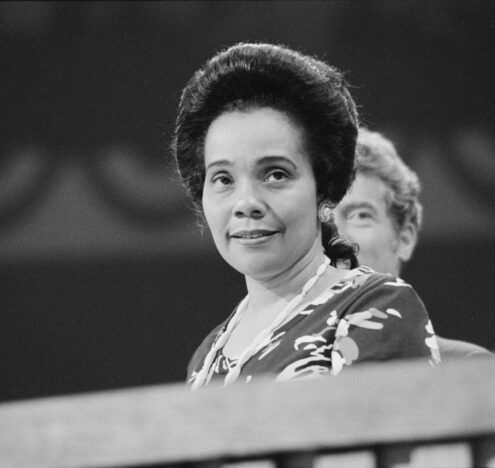Making any kind of gains with North Korea has been a difficult task for US administrations. While improving relations with North Korea may seem low on the list of immediate priorities for the incoming Biden administration, there are a few steps it can take early on to meet urgent US-North Korea policy goals. So Inkstick asked Catherine Killough, Ankit Panda, and Jenny Town how President Joe Biden should approach North Korea. They all agreed that focusing on nonproliferation is not realistic — or enough.
Read their detailed recommendations below:
Catherine Killough, Women Cross DMZ
- Cooperate on Health Security: US-North Korea negotiations are unlikely to resume until the coronavirus pandemic is squarely under control, especially while North Korea remains in a total lockdown to prevent an outbreak that would bear devastating consequences for the under-resourced country. The Biden administration’s commitment to advance global health security should also strive for “COVID diplomacy” with North Korea. That may include lifting the US travel ban for humanitarian workers, medical professionals, and even Korean Americans seeking to reunite with family members in North Korea. Additionally, the United States should heed ongoing calls to adopt the UN general waivers to streamline the provision of aid and suspend broad-based sanctions that worsen the economic hardships of North Korean civilians.
- Avoid Military Escalations: Short of restarting engagement with North Korea, the Biden administration still has an opportunity this year to build goodwill and prevent a further deterioration in relations. Suspending future large-scale US–South Korean joint military exercises, which have been known to heighten military tensions and fail to deter North Korea, could go a long way to fostering a more conducive environment for dialogue. More overt messaging in support of diplomacy, rather than posturing, is also key, especially in coordination with South Korea’s push to revitalize talks.
- End the Korean War: Resolving the US-North Korea nuclear challenge will require shifting away from the failed pressure-based approaches of the past. The new administration can begin by signaling its desire to end the Korean War and reach a peaceful settlement that would forge new relations with North Korea, as outlined in the 2018 Singapore Statement. Laying the groundwork for peace will advance the capacity of both sides to address mutual security concerns, including the nuclear crisis, in the long term.
Ankit Panda, Stanton Senior Fellow, Nuclear Policy Program, Carnegie Endowment for International Peace
- Reframe the Issue: Since the early 1990s, in one form or another, successive administrations have conceived of the challenge represented by North Korea’s pursuit of nuclear weapons capabilities as a nonproliferation problem. But the scope of the problem is far greater. This is no longer a matter of putting the genie back in the bottle: North Korea now is mass-producing nuclear warheads based on tested, standardized designs and transporter-erector-launchers to deliver them. And after the P5 powers, North Korea ranks sixth in terms of the qualitative nuclear capabilities it possesses today (i.e., ICBMs and thermonuclear weapons). If the first principle of US policy is seeking the “complete, verifiable, and irreversible dismantlement” of North Korea’s weapons of mass destruction in the near-term, it is not only bound to fail, but it may, in fact, overlook and expand short-term risks. Instead, the administration needs to reframe its approach around nuclear risk reduction and seek to use what leverage we do have to shape North Korean choices.
- Offer Sanctions Relief: The 2018–2019 bout of US-North Korea diplomacy showcased that economic sanctions, while unlikely to cause North Korea to relinquish its nuclear arsenal, represent a source of leverage. In Hanoi, for instance, the North Koreans requested capacious sanctions relief. The United States should support reversible, limited relief for North Korea in exchange for the verifiable implementation of meaningful nuclear risk reduction measures. If North Korea defects on its commitments in the course of the implementation of such a limited agreement, any sanctions relief could be snapped back.
- Deter, Contain, and Mitigate Escalation Risk: It is not entirely up to the United States whether a nuclear-armed North Korea will respond to the sorts of incentives that will be politically feasible and desirable in Washington. If and when a crisis reemerges on the Korean Peninsula, the United States, South Korea, and Japan will need to coordinate their approaches. Deterring a nuclear-armed North Korea should not mean taking on excessive risks that could exacerbate North Korean insecurity in a crisis and lead to inadvertent escalation and nuclear use. The three countries should arrive at a common understanding of the main sources of nuclear risk as they seek to deter what may be an increasingly risk-acceptant North Korea as its nuclear capabilities grow more robust and survivable.
Jenny Town, Senior Fellow, Stimson Center
- Make the First Move: Taking the time to conduct a policy review is a wise and necessary step, especially given how drastically North Korea’s WMD capabilities have changed in the past four years and the whiplash from “fire and fury” to summit diplomacy. Waiting until the end of the policy review to do or signal anything to the North, however, risks Kim Jong Un and his regime guessing what to expect from the Biden administration and making the first move based on that guess, potentially putting Washington on defense from the start. If continued diplomacy is anywhere in the cards, early signals to Pyongyang — sent publicly or privately (or both) — could help prevent wrong guesses and miscalculated moves by Kim Jong Un. Additionally, making small unilateral actions, such as green-lighting humanitarian aid and medical equipment provision, and lifting the travel ban on US citizens traveling to North Korea would help convey the sense that different outcomes are possible under this administration.
- Develop a Sustainable Diplomatic Approach: The Biden administration needs to understand that the maximalist position of complete denuclearization up front is unachievable, and that the only way progress will be made toward reducing the threat and eventually rolling back capabilities is through a long-term, phased approach that offers both incentives and disincentives at each step of the way. North Korea is not unique in establishing an incredibly high bar for being willing to voluntarily relinquish its nuclear weapons program. In order to get to the end of that denuclearization road, a solid foundation of trust will need to be built over time — and proven sustainable through multiple presidential administrations — for Pyongyang to trust that it will be safe from external threats without nuclear weapons while sitting in the middle of a nuclear-armed region.
- Reject the Status Quo: Recognize that settling for the status quo on North Korea means the nature of the problem will only get worse. Pyongyang will not simply stop its nuclear and missile program development to see what the United States might offer it one day. The laundry list of ambitions noted during the Eighth Party Congress was a stark reminder of how North Korea continues to work on improving range, accuracy and reliability of its missile systems, diversify its means of delivery, and work toward higher-yield, miniaturized and tactical nuclear weapons. These advancements not only increase North Korea’s threat to the region but as its long-range ballistic missile capabilities improve, also erode allied confidence in US extended deterrence in the region as well. If these outcomes are unacceptable, US policy must become more agile to secure small wins while working toward larger ones, to help stop this speeding train in its tracks and slowly pull it back to the station.
Also check out:
After the Apocalypse: Cybersecurity
After the Apocalypse: Climate Crisis
After the Apocalypse: US Grand Strategy
After the Apocalypse: US Nuclear Policy




















